Showing all posts about Australian literature
The 2023 Stella Prize longlist
2 March 2023
The 2023 Stella Prize longlist was announced this evening by Melbourne based Australian author Alice Pung. The twelve books are:
- The Furies by Mandy Beaumont
- Every Version of You by Grace Chan
- We Come With This Place by Debra Dank
- big beautiful female theory by Eloise Grills
- The Jaguar by Sarah Holland-Batt
- Hydra by Adriane Howell
- Jack of Hearts: QX11594 by Jackie Huggins and Ngaire Jarro
- All That’s Left Unsaid by Tracey Lien
- Indelible City Louisa Lim
- Iris by Fiona Kelly McGregor
- Decadence by Thuy On
- Bad Art Mother by Edwina Preston
Created ten years to recognise the work of Australian women writers, the Stella Prize is one of Australia’s most prestigious literary awards. The shortlist of six titles will be announced on Thursday 30 March 2023.
RELATED CONTENT
Australian literature, literary awards, Stella Prize
The Wakes, debut fiction by Australian author Dianne Yarwood
1 March 2023

I’m yet to read The Wakes, published by Hachette Australia, March 2023, by Sydney based Australian author Dianne Yarwood, but I’m already convinced it could be adapted to film. I’ve even thought of a name: Four Funerals and a Divorce. I’m not actually sure a divorce even occurs in Yarwood’s fiction debut, there may in fact be two, given the blurb to The Wakes tells us two failing marriages (and four funerals) feature in the story. But back to my big screen adaptation idea.
Since my fanciful film title, Four Funerals and a Divorce, obviously riffs on the 1994 film Four Weddings and a Funeral, directed by Mike Newell, and starring Andie MacDowell and Hugh Grant, the two leads could be invited to participate. The rest of the would-be cast though would of course be Australian. But now back to The Wakes.
Sydneysider Clare has recently separated from her husband. She is happy to accept a call for help from Louisa, her neighbour. Louisa runs a catering business that specialises in wakes, the gatherings that take place after funerals. Louisa is overwhelmed with work. Assisting Louisa is a smart move on Clare’s part for several reasons. Wake catering has to be a growth industry. Further, it is somewhat immune to the threats posed to other forms of employment by the likes of AI Chatbots.
But job security, whether Clare is looking for it or not, is moot point. Wake catering might be about to change her life. For it is at one post funeral gathering that Clare makes the acquaintance of Chris. He is a doctor working in the emergency room of a hospital. Chris sees too much death in his job to want to think about going to funerals, but he decides one day to make an exception.
The Wakes is isn’t all wake catering though. In the mix is love both lost and found, unsuccessful rounds of IVF, and the constant comfort that food can bring to the lives of people whose depleted spirits need a little lift.
Prior to penning her first novel, Yarwood worked in accounting and corporate advisory, both in Australia and Europe. She also has an interest in cooking and catering, which seems to have partly inspired her novel. But there’s more. Her life was once saved by an emergency room doctor, an experience that lead Yarwood to focus on her long held writing ambitions. Along with possibly being the genius behind the character of Chris.
Could we be seeing another instance of art imitating life, as we do in a lot of fiction, among the pages of The Wakes?
UPDATE: after waxing lyrical about the possibility of a film adaptation, a reader messaged to let me know a TV series, based on The Wakes, is in the works. A screen adaptation deal was reached last September, with production company Fifth Season.
RELATED CONTENT
Australian literature, Dianne Yarwood, fiction, novels
The NSW Premier’s Literary Awards 2023 shortlists
1 March 2023
The NSW Premier’s Literary Awards 2023 shortlists were announced today, with Australian written works nominated across more than twelve prize categories.
Cold Enough for Snow by Jessica Au, Grimmish by Michael Winkler, The Upwelling by Lystra Rose, Another Day in the Colony by Chelsea Watego, The Jaguar by Sarah Holland-Batt, and We Come With This Place by Debra Dank, are among contenders.
The winners will be named on the evening of Monday 22 May 2023, in Sydney.
RELATED CONTENT
Australian literature, Jessica Au, literary awards, Michael Winkler
One Illumined Thread, debut fiction by Sally Colin-James
28 February 2023
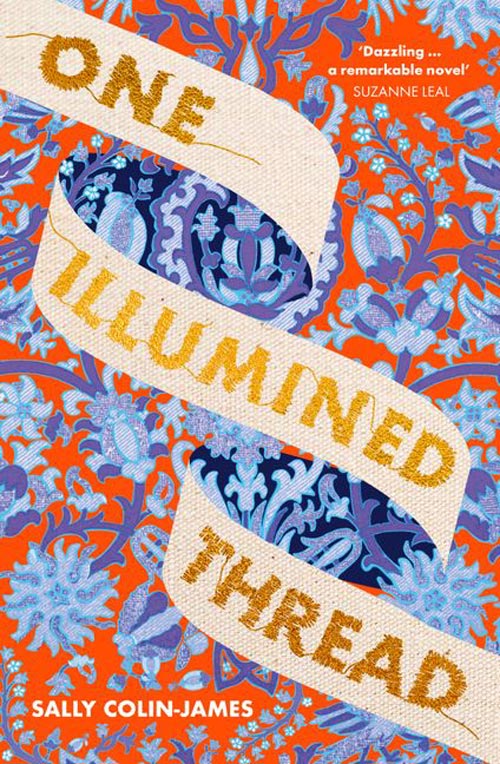
The stories of three women, living millennia apart, form a single, though not immediately obvious, thread that runs through One Illumined Thread, published by HarperCollins, March 2023, the debut novel of Australian author Sally Colin-James.
A young woman living two thousand years ago in Judea, an ancient kingdom in parts of what are today Palestine and Israel, is cast out of her home after failing to become pregnant. She longs to have a child, and as a way of keeping the hope of motherhood in her sights, takes the unusual step of learning the craft of glassblowing.
Fifteen hundred years later, in the Italian city of Florence, a woman is left without any money after being betrayed by her husband. The Renaissance is at its height, but with a son to look after also, she battles to make ends meet. The third thread of the story plays out in latter day Australia. Here a woman, devastated by a loss, working as a textile conservator, faces danger that puts her life at risk.
While the challenges confronting each woman seem insurmountable, the three share a link, even though they are separated by vast periods of time and distance.
The premise of One Illumined Thread brought to mind The Bass Rock, written in 2020 by Anglo-Australian author Evie Wyld. Wyld’s novel, winner of the 2021 Stella Prize, recounts the story of three woman who lived in the North Berwick area of Scotland at various times. Two women, Ruth and Viv, have a family connection, step grandmother and granddaughter, while the third, Sarah, lived several centuries earlier.
But where the ties between the three main characters in The Bass Rock are more apparent, the links in One Illumined Thread are far less so. Here is a story shrouded in mystery.
Before she took up writing, Colin-James worked in events management, and communications, both in Australia, and internationally. In 2020 she won the inaugural Historical Novel Society Australasia (HNSA) Colleen McCullough Writing Residency in the aspiring writer category. The residency, named in memory of late Australian author Colleen McCullough, awards recipients a week on Norfolk Island, where McCullough spent the latter part of her life.
Colin-James has also won the Varuna PIP Fellowship Award, and the Byron Bay Writers Festival Mentorship Award in 2020. In addition, she was also shortlisted in the First Pages Prize for writers who do not have agents, in 2021.
RELATED CONTENT
Australian literature, fiction, novels, Sally Colin-James
How to Be Remembered, debut fiction by Michael Thompson
26 February 2023
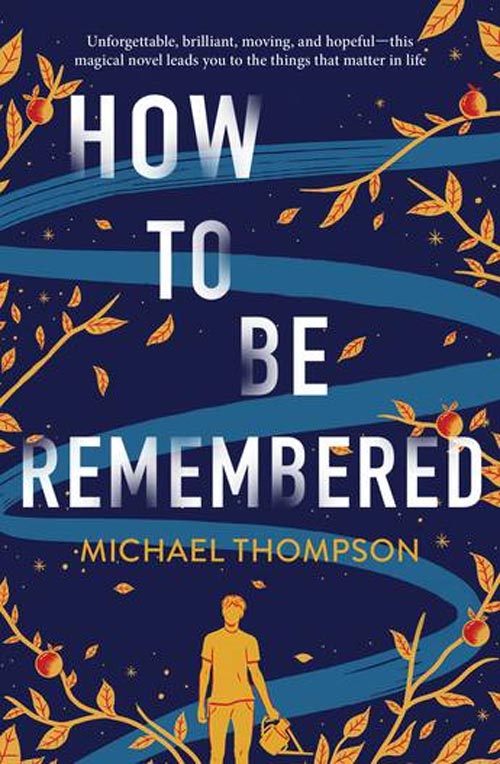
Tommy is desperate to create a legacy for himself. But he can’t wait until he reaches old age. Tommy needs people to remember who he is sooner than that. Before his birthday, to be precise. For, come the conclusion of each lap of his around the Sun, all memory of his existence is erased from the minds of everyone in the world. No one at all remembers him.
This includes his parents, his friends, and even the girl he has a crush on. As far they’re concerned, he was never there. Every trace of his life is obliterated. Memories. Photos. Shared experiences. Every last thing, including, presumably, a criminal record if he has one. Each and every detail gone, as if it were never there. And you thought you were having a bad day.
But not everything dissolves when the clock ticks over into his birthday. Anything Tommy is in direct contact with, such as his clothes, stays with him. The phenomenon is some sort of enigmatic cosmic occurrence that Tommy has dubbed “the Reset”, and it began the day he turned one.
On his first birthday, his parents woke to find an unknown baby in the house. They had no recollection whatsoever of having a son. Clueless as to who the infant was, they called the police, who sent Tommy to a foster home. And so it went. Every year all traces of Tommy are wiped from the world’s slate, leaving him to spend the following twelve months rebuilding his life.
How to Be Remembered (published by Allen & Unwin, February 2023), by Sydney based Australian journalist and podcast producer Michael Thompson, straight away had me thinking of Harold Ramis’ 1993 film Groundhog Day. Like Ramis’ hapless protagonist Phil, portrayed by American actor Bill Murray, Tommy is aware of his predicament, albeit one that plays out annually instead of daily.
He remembers everything from before his birthday. To him, his life is continuous. He still knows those around him, although they don’t have the faintest idea who he is. Accordingly, Tommy has devised strategies to re-establish himself in the lives of those he was with before the Reset.
But Thompson’s debut work of fiction is not only reminiscent of the likes of Groundhog Day. Parallels have also been drawn with The Curious Case of Benjamin Button, and even Forrest Gump. The Reset, meanwhile, is another matter. It is a sadistic abnormality that perhaps a serial speedster — seeking only to have an unblemished driving record restored every year — might appreciate.
But it is for that reason I see How to Be Remembered being a story that will excite readers. So much so, that I wouldn’t be surprised to see a screen adaptation in the not too distant future.
RELATED CONTENT
Australian literature, fiction, Michael Thompson, novels
New Australian books and TBR ideas, 24 February 2023
24 February 2023
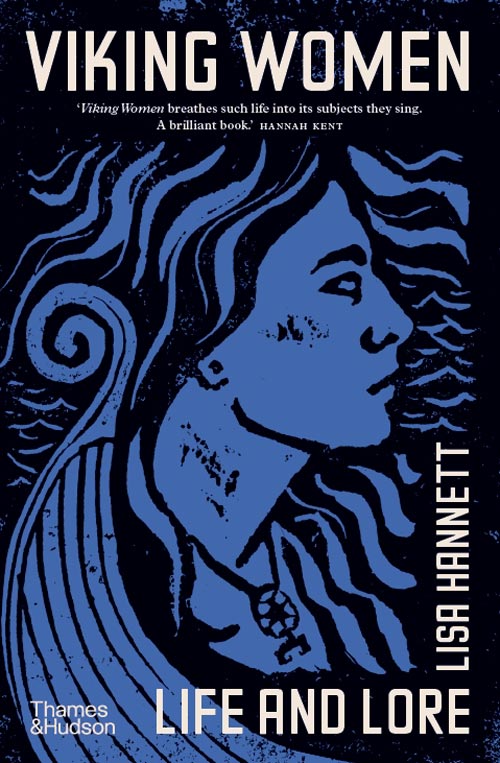
Here’s a selection of Australian written books, either recently published, or in the pipeline, that I’ve spotted in the last week, for the consideration of your TBR list.
- Viking Women by Lisa Hannett, tells the stories of the wives and mothers, girls and slaves, widows and witches, who sailed, settled, suffered, survived, and thrived, in the patriarchal society of the Vikings.
- Desi Girl: On feminism, race, faith and belonging by Sarah Malik, is a collection of short stories exploring the complexities of living between different worlds as a young Pakistani-Australian woman growing up in the west of Sydney.
- Locked Ward by Anne Buist. A psychiatrist discreetly seeking treatment for a sleeping disorder at a private psych facility becomes embroiled in a murder investigation. But not because she was present at the time, but because she knows everyone involved in the case.
- The Albatross by Nina Wan. Primrose is a woman at a personal and professional crossroads in her life, who suddenly decides to take up golf. Despite a shaky start to her game, golfing proves to be a panacea for many of her problems.
- The Heart Is A Star by Megan Rogers. Layla is a middle-aged woman dealing with a failing marriage, a demanding job, her children, an overly dependant lover, and exhaustion. Things only get worse when Layla’s overwrought mother calls to say there’s something pressing about her father she needs to know.
RELATED CONTENT
Anne Buist, Australian literature, books, Lisa Hannett, Megan Rogers, Nina Wan, Sarah Malik
Apartment 303, a new Australian thriller by Kelli Hawkins
23 February 2023
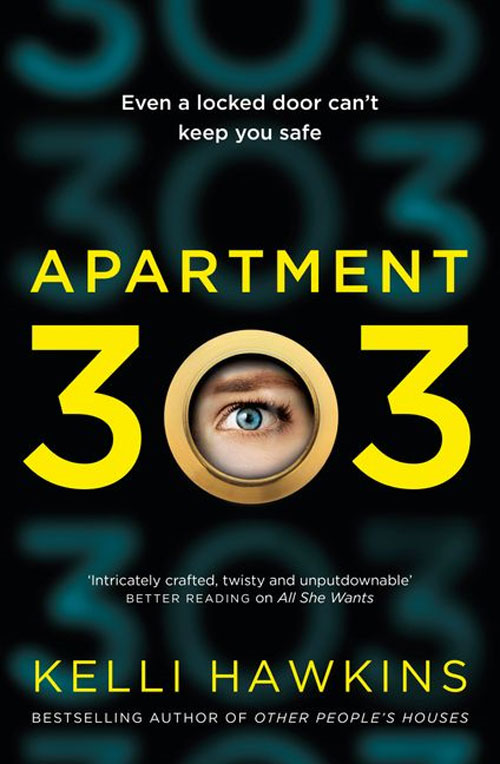
Twenty-something Sydneysider Rory is ready for a prolonged period of isolation. Her job, writing reports for a private investigator, means she doesn’t need to leave her apartment building for work. She has a pet dog to keep her company, and the roof area of the building is a fine place to exercise and walk the dog. Rory is also possessed of a vivid imagination. She has even given backstories, of her own making, to some homeless people, whom she never spoken to, camping over the road.
Lockdown is going to be kind to Rory. But there’s only one thing. The COVID-19 lockdowns are no more. Rory’s confinement is self-imposed. Her fear of the outside world is so intense, she even goes all out to avoid her neighbours. Rory is a woman with a troubled past, and the gilded cage she has created is her only tonic. But the future is about to add to her woes, in Apartment 303, published by HarperCollins Australia, in March 2023, by Newcastle based Australian author, Kelli Hawkins.
When one of the homeless people across the street is murdered, Rory is forced to adjust her relationship with the outside world. She has frequent contact with police investigating the death, and also makes the acquaintance of neighbours for the first time. But not all of the knocks at the door are welcome. And when a chapter of her past, one that Rory would rather forget, comes calling, she begins to feel unsafe in her previously protective home.
Apartment 303 is Hawkins’ third novel, and like her protagonist Rory, Hawkins’ likewise writes reports for a private investigator, between working on manuscripts. And as with many writers of fiction, Hawkins’ own experiences shape her stories. Her debut novel, Other People’s Houses, published in 2021, tells the story of a woman, Kate, who spends her Saturdays inspecting houses listed for sale.
In the same way Rory finds solace by locking herself away from the world, seeing the homes of other families bring comfort to Kate, whose son who died ten years earlier. Hawkins is no stranger to viewing properties either. Between living in Australia, and stints in the United Kingdom, and America, she has been a frequent house hunter, including more recently, in tragic circumstances, following the death of her husband.
Early reviews on Goodreads have described Apartment 303 as “a slower burn thriller”, “a stirring, suburban tale of mystery, suspense and daring”, and “a page-turner”.
Having penned three novels in as many years, Hawkins’ output could be described as prolific, and another novel is probably already in progress. Hawkins has also worked as a graphic designer, political journalist, mystery shopper, and a role as a “staple remover”, in the past. I see plenty of inspiration for more stories in amongst those occupations.
RELATED CONTENT
Australian literature, Kelli Hawkins, novels
Affirm Press to publish One Divine Night by Mick Cummins
22 February 2023
Less than three weeks after winning the unpublished manuscript award in the 2023 Victorian Premiers Literary Awards, former Melbourne based social worker and screenwriter Mick Cummins has been offered a publishing deal by Affirm Press for his novel One Divine Night:
We’re elated to announce that Affirm Press has acquired world rights to One Divine Night by Mick Cummins, who recently won the prestigious Victorian Premier’s Unpublished Manuscript Award, in a deal brokered by Jane Novak Literary Agency. One Divine Nightis a gritty and compelling novel exploring homelessness, independence and the ties that bind. The story follows protagonist Aaron Peters as he becomes estranged from his family, addicted to heroin, and ends up living on the streets of Melbourne but yearning for a different life.
It is anticipated One Divine Night will be in bookshops by late 2023.
RELATED CONTENT
Australian literature, books, Mick Cummins, novels
Funny Ethnics, the debut novel of Sydney writer Shirley Le
19 February 2023
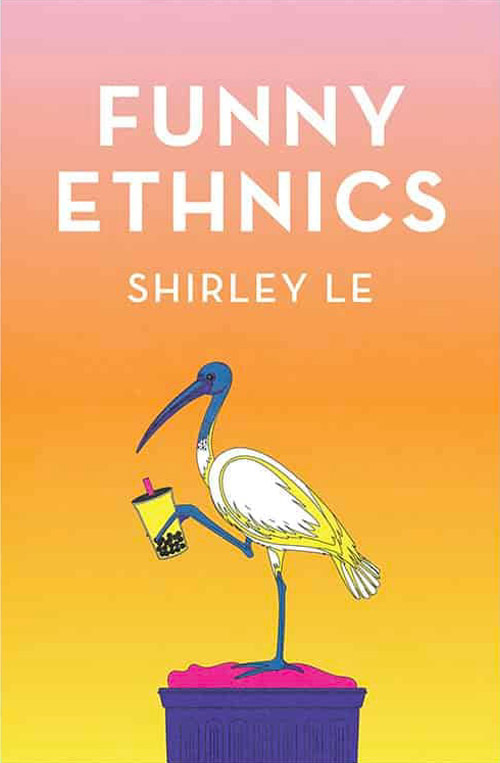
Yagoona is a suburb in the southwest of Sydney, located about twenty kilometres from the city’s CBD. An Aboriginal word meaning “now” or “today”, Yagoona was accorded a unique claim to fame in 1971, when it became host to the first McDonald’s hamburger restaurant in Australia.
At this stage I could not tell you whether said hamburger restaurant features in any way in Funny Ethnics (published by Affirm Press in February 2023), the debut novel of Sydney based Australian author Shirley Le, which is also set in Yagoona.
It is possible though, as the story follows the fortunes, and misfortunes, of Sylvia Nguyen, a second generation Vietnamese-Australian, from childhood through to adulthood. Surely it is not unreasonable to assume Sylvia would have hung out at her local Macca’s with friends after school, as was a rite of passage for many Australian teenagers.
But even if Sylvia spent all her school days in the Yagoona McDonald’s, it seems doubtful she would have had much interest in the restaurant’s significance in Australian fast food history. That’s because Sylvia had lofty goals. She aspired to move out of her childhood home, leave Yagoona and Western Sydney behind, and move into a share house, in a world far removed in Sydney’s inner west.
But hardships run in tandem with the dreams. The city is not always welcoming of immigrants. Racism is rife. Sylvia struggles to balance her Vietnamese heritage with her Australian identity.
Whether Sylvia’s experiences mirror Le’s, also a second generation Vietnamese-Australian, is another matter though. The question of how much of her life goes into her writing is something Le says she is often asked. Speaking to Stephen Pham of Liminal magazine in 2018 however, Le said she considered herself a writer of literary fiction rather than autobiography. And in Funny Ethnics, Le seems more interested in taking the ordinary, the apparent hum-drum of day-to-day life, and transforming it into something extraordinary.
While Funny Ethnics is Le’s first novel, her name will be familiar to anyone with an interest in Australian literature. A member of Western Sydney literacy movement Sweatshop, Le’s short stories and essays have been published locally in Meanjin, Kill Your Darlings, Overland, SBS Voices, and The Lifted Brow, among others. Le was also the inaugural recipient of the Affirm Press Mentorship for Sweatshop Writers, together with Arab-Australian human rights activist Sara Saleh.
RELATED CONTENT
Australian literature, novels, Shirley Le
New Australian books and TBR ideas, 17 February 2023
17 February 2023
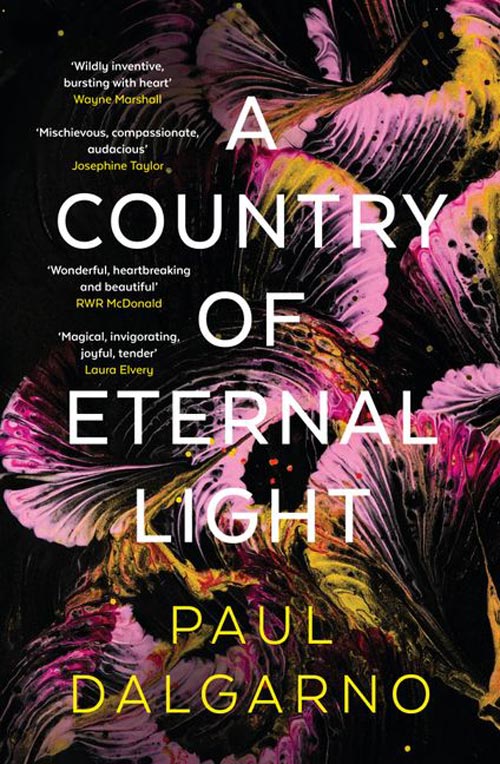
Here’s a selection of recent or upcoming Australian published books to add to your TBR list, that have caught my eye this week.
- The Bookbinder of Jericho by Pip Williams — follow up to 2020’s The Dictionary of Lost Words — a story about twin sisters working in the bindery at Oxford University Press during World War I.
- The Wakes by Dianne Yarwood. Funerals, failing marriages, and a catering business, are the ties that bind five people, to greater or lesser degrees, in Yarwood’s fiction debut.
- Gigorou by Sasha Kutabah Sarago. The beauty assistant, model, and magazine editor recounts her journey to reconcile her conflict with beauty.
- The Messiah’s Bride by Megan Norris. The harrowing story of Stefanie Hinrichs, a survivor of an Australian doomsday cult, who was forced to become the child bride of the cult’s leader.
- A Country of Eternal Light, by Paul Dalgarno. A dead woman travels back and forth through time, and around the globe, as she seeks meaning in life and death.
RELATED CONTENT
Australian literature, books, Dianne Yarwood, Megan Norris, Paul Dalgarno, Pip Williams, Sasha Kutabah Sarago
